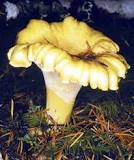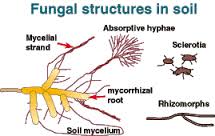Thomas Jefferson once said, “Healthy soil produces healthy plants”. Seems like common sense, though, what is healthy soil?
As a horticulturist I am often asked this very question, my first response usually being, what do you know about your soil? Many times the answer to this question may involve a long dialogue about yearly lime applications, the proper depth and time of tilling, the importance of crop rotations, the scheduling of fertilizers and common pesticides, the agony presented by lack of irrigation during a hot dry summer such as this, or simply the lack of resources for such. Yet this tiny soil Houdini, crop enhancing, money saving secret remains unmentioned by many.
On the other spectrum we have the sustainable agricultural techniques, such techniques involve working with natural processes rather than struggling against them. The idea in which crop rotation, cover crops, soil enrichment, natural pest predators as well as bio intensive integrated pest management, to name a few, reduces the need of fertilizers and pesticides, in theory saving money as well as the environment. Yet again, in many instances, this tiny soil secret remains silently and completely unmentioned.
The Food and Agriculture Organization of the United Nations has defined soil health as “the continued capacity of soil to function as a vital living system, within ecosystem and land use boundaries, to sustain biological productivity, promote the quality of air and water environments, and maintain plant, animal and human health”.
Cornell University states soil quality as “how well soil does what we want it to do. Soil quality is the capacity of a specific kind of soil to function, within natural or managed ecosystem boundaries, to sustain plant and animal productivity, maintain or enhance water and air quality, and support human health and habitation”.
The UN and Cornell Universities definitions of soil health and soil quality both teeter on the pendulum of sustainable biological productivity, herein lies our soil Houdini.
Juggling the IPM – Integrated Pest Management Systems as well as best practice fertilization programs and the like, may cause you to “feel” as if you are proactive in contributing to your bottom line, with a low risk, high yield approach. It is the same when we are proactive in regards to our own biological health. We are inundated with the idea of vitamin D for healthy bones, vitamin C to build the immune system, garlic capsules to suppress sickness and maintain a healthy blood pressure, B12 for energy and the list goes on. We are all very much aware of our own physical upkeep as a new paradigm for public health has been washing over the country, the new trend of probiotic health. What about our soils?
Our soils are in direct relation to the health of our environment, as well as the quality and health of our own lives. As a grower, soils are our lives. We toil long hours over the fields, knowing the quality of our livelihood is in the hands of these soils, the quality of our produce is determined here as well.
Are you interested in producing more robust crops at a lower cost?
Mycorrhizae is the secret to stronger, healthier more cost effective crops.
Mycorrhizae has not been a secret to the soil, they have been on this earth as far back as the Garden of Eden, though they have eluded us, the Houdini of the soil.
What are Mycorrhizae?
Mycorrhizae – “Myco”-“rhiza literally means “fungus” – “root” briefly describing the relationship between fungus and plant. There are many types of Mycorrhizae, actually 7 types widely recognized by modern research, for the sake of time, we will speak generally. The two main types of Mycorrhizae are considered Endo Mycorrhizae, (internal, within) and Ecto Mycorrhizae, (outer, external, on the outside). These Mycorrhizae create a symbiotic relationship between plant and root fungus to create a higher capacity in nutrient and water absorption for all parties involved.
The benefits of Mycorrhizae in the soil include:
- Increases surface absorption of roots 100 to 1,000 times

- Increases nutrient uptake by releasing powerful enzymes into the soil that dissolve hard to capture nutrients, such as organic nitrogen, phosphorus, iron and other tightly bound soil nutrients
- Mycorrhizae form an intricate web that captures and assimilates nutrients, conserving the nutrient capital in soils
According to the New York Botanical Garden 90% of all vascular land plants live in some association with Mycorrhizal fungi. In order to maximize both organisms abilities to thrive most plants allow, and indeed require, mycorrhizal fungi to colonize their roots.
Many forested lands and undisturbed soils are filled with beneficial soil organisms including mycorrhizal fungi, though common practice has caused mycorrhizae in our soils to become depleted, eradicated and basically ignored. Once a mycorrhizal population has been decimated from the soil its only hope to regenerate is either close proximity to a natural area that can act as a source of inoculant through spore dispersion or human intervention.
Mycorrhizal inoculations can dramatically improve soil health and quality, offering the soil a probiotic boost so to speak. A building is only as strong as its weakest beam, so it is with our soils. Our plants are only as strong as our soils allow them to be. Creating a symbiotic environment with mycorrhizae in the soil can reduce watering, fertilizing and pest control, create healthier more robust crops and lower your bottom line on costs dramatically. One thimbleful of soil can contain several miles of mycorrhizal fungal filament, the tiny secret to healthy, quality soil.
Give Mycorrhizae a chance.